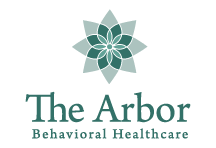A medically supervised detox is the first step in treating a serious opioid addiction. Withdrawal can be the hardest part of the process, and the symptoms of withdrawal can be severe. Having around-the-clock monitoring as you go through withdrawal is the safest and most effective option. Trying to withdraw yourself at home is dangerous and has the highest risk of relapse. Addiction is a disease and should be treated as seriously as any disease. To learn more about an opioid addiction treatment program in Austin, call The Arbor today at 844.413.2690.
How Long Does Opioid Withdrawal Last?
Once opioids leave your system, painful withdrawal symptoms arise. They can become so intense that it causes people to go back to the drug to dull the symptoms. This is why withdrawing from drug use is not recommended to try on your own and why the risk of relapse is so high. Withdrawing from opioid use through a medically supervised treatment program is your best chance at a successful treatment experience and recovery.
The timeline for how long withdrawal lasts can vary. Many factors can play into it and it depends on the individual. Factors that make a difference include:
- The length of time you have been using opioids
- What type of opioid drug
- How you have been using the drug (snorting, smoking, injecting, or taking by mouth)
- How much of the drug you are taking
- Family medical history
- Genetic makeup
- Mental health history
Essentially, it breaks down to a three-part process. They call the parts early, peak, and then finally late-stage withdrawal. The early stage is when you first stop using opioids, and the withdrawal does not seem so bad. Next is the peak stage, which happens a day or so after you stop using the drug and can last a few days. This is when your body basically rebels, and the most intense symptoms of withdrawal will surface. In the late stage, the intensity of symptoms will lessen, and this stage comes on about a week after you stop using opioids.
Not all symptoms will lessen at the same time, however. For instance, the physical withdrawal symptoms typically lessen first and then emotional and psychological symptoms. Cravings are the one symptom that can linger much longer. In fact, you may have to manage cravings throughout your treatment and recovery.
What Is an Opioid Addiction Treatment Program?
An opioid addiction treatment program involves a variety of therapies and counseling to treat clients as holistically as possible. Therapies can include:
- Cognitive-behavioral therapy (CBT)
- Motivational interviewing
- Group therapy
- Family therapy
- Yoga therapy
- Equine therapy
This combination of therapies helps to address how addiction addresses both a person’s mental and physical well-being. Therapies address the root causes of addiction and help develop coping skills so that recovery can be best maintained for the long haul. After all the hard work of going through withdrawal and managing the symptoms, you want to have the tools in place to find recovery success.
The Arbor: Get Help for Opioid Abuse Today
With a highly addictive drug like opioids, finding a high-quality, professional addiction treatment center is critical to your addiction treatment and recovery success. The Arbor provides a continuum of care as part of its treatment approach for opioid addiction. The entire person is treated—mind, body, and soul.
The Arbor offers both residential and outpatient treatment options, as well as a sober living extended care facility for both men and women. The treatment team will conduct a thorough intake evaluation so that they can suggest a customized treatment plan that will address your unique and individual needs.
Call the treatment team today at 844.413.2690 to find out more about how to manage withdrawal.


